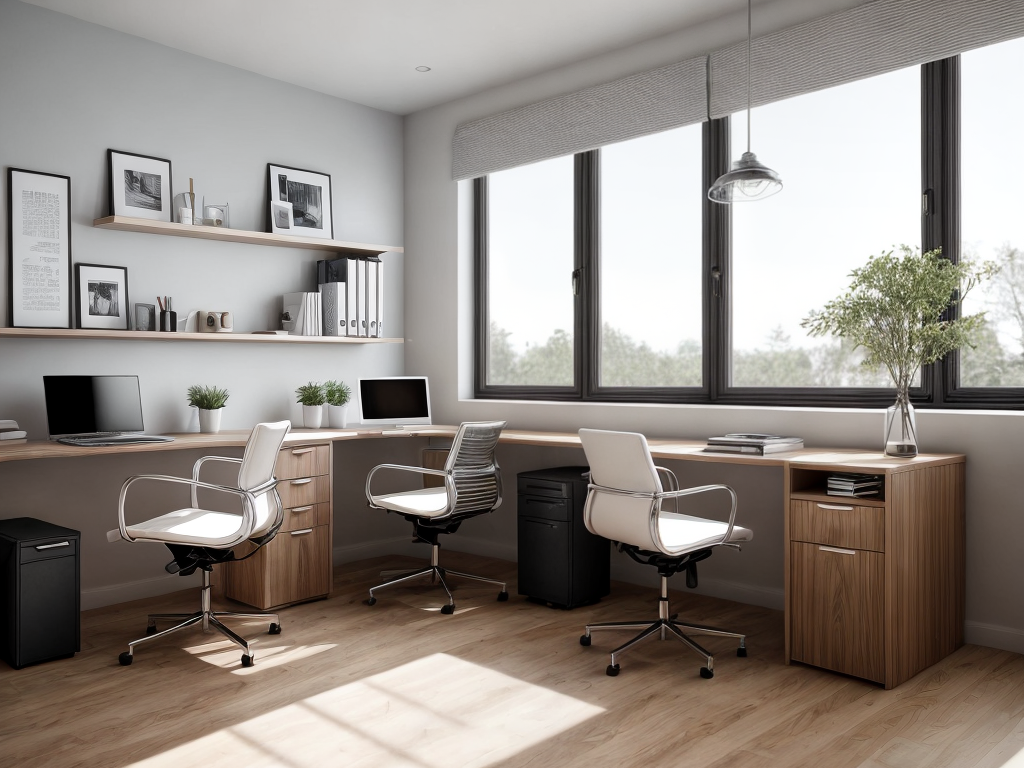
As I was sitting in my living room, staring at the worn-out carpet and outdated wallpaper, I couldn’t help but daydream about the possibilities of a home remodel. The thought of transforming my space into something fresh and modern was too enticing to ignore. But where does one even begin? With so many decisions to make and details to consider, it can easily become overwhelming. That’s why I’m here to guide you through the step-by-step process of planning your home remodel, helping you turn your vision into a reality. So, let’s dive in and uncover the secrets to a successful home renovation that will leave you excited for what lies ahead.
Set a Budget
When setting a budget for your home remodel, it is essential to determine your financial constraints and prioritize your renovation goals. Planning is crucial to ensure that you make the most of your resources and achieve the desired outcome. To begin, assess your financial situation by reviewing your income, expenses, and savings. Consider how much you can comfortably allocate to your remodel without compromising your financial stability. It is important to be realistic and avoid overextending yourself financially.
Next, prioritize your renovation goals based on your needs and wants. Determine what aspects of your home are most important to you and allocate a portion of your budget accordingly. This will help you stay focused and make informed decisions throughout the remodeling process.
In addition to setting a budget, it is also important to consider other financial considerations. Research the costs of materials, labor, and any additional expenses that may arise during the remodel. It is wise to set aside a contingency fund for unexpected costs or changes in plans.
Define Your Goals
When planning a home remodel, it is crucial to define your goals in order to stay focused and achieve the desired outcomes. Clearly outlining your goals and objectives will help you create a vision for your project and identify your aspirations. By setting clear goals, you can ensure that your remodel aligns with your vision and meets your expectations.
Goals and Objectives
To successfully plan your home remodel, it is essential to clearly define your goals and objectives. This involves determining what you want to achieve with your remodel and what specific areas of your home you want to improve. Start by considering your budget and how much you are willing to spend on the project. This will help you prioritize your goals and determine what is feasible within your financial constraints. Additionally, think about the timeline for your remodel. Are there any specific deadlines or events that you need to consider? By defining your goals and objectives upfront, you can effectively plan your budget and manage your timeline, ensuring a smooth and successful home remodel.
Vision and Aspirations
With clear vision and ambitious aspirations, I am ready to define my goals for my home remodel. My dream home is a reflection of my personal style and taste, and I want the design to inspire me every day. To start, I will gather design inspiration from various sources such as home decor magazines, websites, and social media platforms. I will create a vision board or a digital folder to compile all my ideas and inspirations. This will help me visualize the overall look and feel I want to achieve for my home remodel. Additionally, I will prioritize my goals based on what is most important to me, whether it’s creating a functional space, increasing storage, or incorporating sustainable materials. By defining my goals and gathering design inspiration, I can ensure that my home remodel will be a true reflection of my vision and aspirations.
Desired Outcomes
Now that I have a clear vision and a collection of design inspiration, it’s time to define my goals for my home remodel. When considering desired outcomes for my project, it’s important to take budget considerations into account. I want to ensure that my goals are realistic and achievable within my budget constraints. To help with this process, I have created a table to organize and prioritize my goals:
| Desired Outcomes | Budget Considerations |
|---|---|
| Increase home value | Set a budget cap |
| Improve functionality | Research cost-effective options |
| Enhance aesthetic appeal | Allocate funds for high-impact areas |
| Create more space | Consider cost-saving alternatives |
Research and Gather Inspiration
When it comes to planning a home remodel, research and gathering inspiration are crucial steps in the process. Online design resources provide a wealth of ideas and inspiration, allowing me to explore different styles, layouts, and color schemes. Additionally, visiting showrooms gives me the opportunity to see materials and finishes up close, helping me make informed decisions for my remodel.
Online Design Resources
To gather inspiration and conduct research for your home remodel, explore the vast array of online design resources available. Virtual consultations are a great option for homeowners who want professional advice without the need for in-person meetings. Many interior designers and contractors offer virtual consultations, allowing you to discuss your project and receive expert guidance from the comfort of your own home. Additionally, DIY design websites and apps can be incredibly helpful in planning your remodel. These resources provide tools and templates that allow you to visualize different design options and layout ideas. They also offer tips and tutorials to help you navigate the remodeling process on your own. By utilizing online design resources, you can gather inspiration, receive professional advice, and plan your home remodel with ease.
Visiting Showrooms
After exploring the online design resources available, the next step in planning your home remodel is to visit showrooms to research and gather inspiration. Showrooms offer a hands-on experience and allow you to see and touch different materials, fixtures, and finishes. When selecting showrooms to visit, consider the specific areas of your home you’re looking to remodel and find showrooms that specialize in those areas. This will ensure that you find the most relevant products and ideas. Once you arrive at the showroom, take your time to explore and ask questions. Showroom staff are knowledgeable and can provide valuable insights and recommendations. Take note of the showroom’s layout and organization, as this can indicate their attention to detail and commitment to customer satisfaction. Remember to bring a notepad or take photos to capture any ideas or products that catch your eye. The showroom experience is a crucial step in the planning process, so make the most of it and gather as much inspiration as possible.
Hire a Professional Team
To ensure a successful and efficient home remodel, it is imperative to enlist the expertise of a professional team. While some homeowners may consider a DIY approach to save money, there are several benefits of hiring professionals for your remodeling project.
Firstly, professionals bring experience and expertise to the table. They have the knowledge and skills to handle all aspects of the remodel, from design and planning to execution and completion. Their expertise ensures that the project is done right the first time, saving you time, money, and frustration.
Secondly, hiring a professional team provides access to a network of trusted contractors and suppliers. They have established relationships with suppliers, which can result in better pricing and quality materials for your project. Additionally, they can coordinate and manage subcontractors, ensuring smooth communication and efficient progress.
However, it is essential to be vigilant when selecting a professional team. Look out for red flags such as lack of proper licensing and insurance, poor communication, or a history of incomplete or subpar work. It is crucial to research and interview multiple professionals, check references, and review their portfolio to ensure you are hiring a reputable and reliable team.
Create a Detailed Plan
Now that you have hired a professional team, it is time to meticulously plan every aspect of your home remodel. Creating a detailed plan is crucial to ensure that your project stays on track and within budget. Start by conducting a thorough cost analysis to determine the expenses associated with your remodel. Consider factors such as materials, labor, permits, and any unexpected costs that may arise. This analysis will help you establish a realistic budget and prevent any financial surprises along the way.
Next, focus on timeline management. Determine a realistic timeline for your project, taking into account the scope of work and any potential delays. Break down the project into smaller tasks and set deadlines for each phase. This will help you stay organized and ensure that the remodel progresses smoothly.
When creating your plan, be sure to communicate your goals and expectations with your professional team. Collaborate with them to establish a clear vision for your remodel and make sure everyone is on the same page. Regularly communicate and update your team on any changes or adjustments to the plan.
Manage the Remodeling Process
During the remodeling process, it is essential to actively manage and oversee the various tasks and aspects of your project to ensure its successful completion. To effectively manage your home remodel, consider the following strategies:
-
Establish a clear project timeline: Create a detailed schedule outlining the start and end dates for each phase of the remodel. This will help you stay on track and ensure that deadlines are met.
-
Communicate regularly with your contractor: Maintain open lines of communication with your contractor to discuss progress, address any concerns, and make necessary adjustments. Regular meetings and updates are crucial to keeping everyone on the same page.
-
Document everything: Keep records of all discussions, agreements, and changes made throughout the remodeling process. This will help avoid misunderstandings and serve as a reference point if any issues arise.
-
Monitor the budget: Track expenses and compare them to your initial budget. Make adjustments as needed to stay within your financial constraints and avoid any unexpected costs.
-
Stay organized: Keep all relevant documents, such as contracts, permits, and receipts, in one easily accessible location. This will help you stay organized and have all the necessary information at your fingertips.





